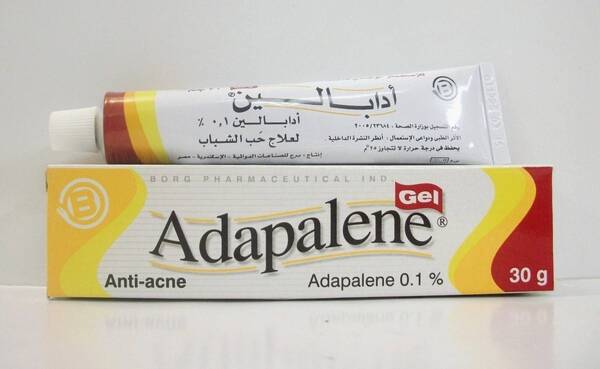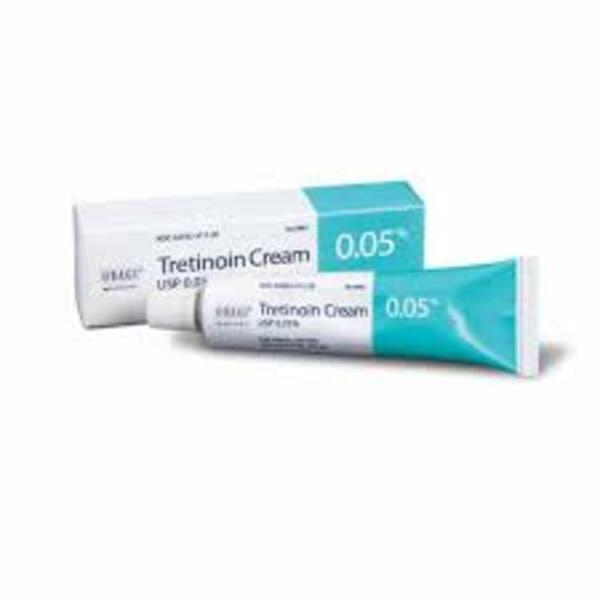Adapalene VS Tretinoin: Which Is More Effective?

One of the most well-known and frequently utilized retinoids on the market is tretinoin, also known as retinol. Both medications may appear virtually identical on paper, with comparable advantages and potential drawbacks. What one should you include in your skin care regimen? To help you decide which is best, let’s look at each one separately.
What Is Tretinoin
In a nutshell, tretinoin is a retinoid that is only available by prescription.
There is a lot of evidence to support the efficacy of tretinoin, even though it’s debatable whether or not everyone needs that level of strength (a medical professional can help you decide for your skin).
Benefits Of Tretinoin
- Minimize Pores
By removing the oil, dirt, and dead skin cells that accumulate in enlarged pores, tretinoin makes pores appear smaller. The pores become less noticeable when you use Tretinoin to remove pore buildup and increase cell turnover.
Make sure your skincare and makeup products don’t contain any comedogenic ingredients to prevent buildup in the first place. These are pore-clogging substances that can result in blackheads and enlarged pores.
Numerous other substances, including beeswax, alcohols like cetyl alcohol and stearyl alcohol, oils like almond, coconut, and palm oil, and beeswax are examples of common comedogenic ingredients.
- Make Skin Smoother
Tretinoin reduces the layer of dead skin cells on the skin, similar to what happens during exfoliation, and increases glycosaminoglycans (GAGs).
GAGs draw water molecules, and hydrating connective tissue. They play a significant part in maintaining the health of skin cells, preventing dry skin, and enhancing its firmness and elasticity for a smoother appearance and feel.
- Lighten Dark Spots
Your skin, hair, and eye colors are all determined by melanin, a natural pigment. Uneven skin tone results from the uneven distribution of melanin, or hyperpigmentation. Melasma, freckles, and dark spots are the symptoms.
Age, skin damage, hormonal changes, disease, and medication all have the potential to cause hyperpigmentation.
Tretinoin spreads out melanin granules, resulting in more uniform skin pigmentation.
Side Effects Of Tretinoin
Tretinoin shares many of the same irritation-related side effects as other retinoids.
When you first start using a prescription retinoid, your skin may feel dry and burning, and you may notice peeling and photosensitivity.
The severity of side effects may also increase with higher tretinoin concentrations.

What Is Adapalene
Retinoids include adapalene. Retinoids, a type of vitamin-A compound, are frequently used in skin care products for a number of reasons, including reducing pigmentation and dark spots and evening out an uneven skin tone.
Retinoids are frequently suggested for skin issues like acne and aging.
Benefits Of Adapalene
While many other skin conditions are treated with adapalene off-label in addition to its FDA-approved use to treat acne.
Adapalene increases the production of collagen, much like other retinoids, which helps to lessen the appearance of wrinkles and fine lines.
Adapalene 0.3% gel was found to be equally effective as tretinoin 0.05% cream in treating fine lines and wrinkles brought on by sun exposure in one study (Bagatin, 2018).
By encouraging the development of new blood vessels in the skin, adapalene can even out skin tone. With pigment disorders like melasma and dark spots brought on by acne and sun exposure, it can be helpful.
In order to treat alopecia areata (patchy hair loss), it is used. Adapalene can also eliminate actinic (solar) keratoses, which are rough, scaly skin patches brought on by prolonged sun exposure.
Side Effects Of Adapalene
Many well-known retinoid side effects, such as those for tretinoin mentioned above, are also present in adapalene.
Skin irritation from adapalene is well-known, and some of the less common side effects include facial edema and swelling of the eyelids or lips.
You should stop using any retinoids right away and seek medical advice if you experience anaphylactic symptoms like facial swelling or hives, chest pain, or shortness of breath after using retinoids.
What’s The Difference
Adapalene and Tretinoin have primarily been studied for treating acne, whereas Tretinoin has also been shown in numerous studies to prevent and improve premature skin aging.
Both adapalene and Tretinoin are effective acne treatments, though Tretinoin is likely to produce results more quickly. You might experience different outcomes because each person’s skin is unique. Maintain a close eye on your skin, and discuss any issues with your dermatologist.
Both ingredients have been shown to be equally effective at treating acne in clinical trials comparing adapalene and Tretinoin. A study found that Tretinoin gel improved acne more quickly than adapalene gel, despite the fact that patients find the former to be less irritating.
Your dermatologist may prescribe adapalene and tretinoin, but you can also buy low-strength adapalene over-the-counter (OTC). We always advise consulting your derm, even if you only require a low-strength product.
They can make sure you’re using the right product at the right strength for your skin by examining your skin and discussing your goals with you.
Additionally, your doctor can ensure that you’re using these active ingredients safely by taking into account all other medications and supplements you take, as well as by giving advice if you’re pregnant or nursing.
Both can cause short-term side effects like itchiness, peeling, and purging while your skin adjusts to your new skincare regimen. Therefore, ramp up gradually to lessen the severity of these side effects regardless of the active ingredient you choose.
Which Is More Effective
Which is therefore more efficient? Which is better, adapalene or tretinoin? Honesty dictates that it depends.
Studies show that both are roughly equivalent in terms of how well they treat acne.
While tretinoin has anti-aging properties as well as the ability to treat acne, adapalene is primarily used to treat acne. Tretinoin, therefore, works better to treat wrinkles, sagging skin, and other aging symptoms.
Tretinoin may be a better option if you do want anti-aging benefits. But if you have sensitive skin, it might not be worth it because it can irritate you and make you more sensitive to the sun.
Adapalene may be your best option if you need to treat acne but have more delicate skin because it is the milder of the two.
Which Should You Choose
Both retinoids and adapalene have many advantages. Tretinoin is a tried-and-true medication that has been in use for many years. It has been shown through science to improve a number of skin health-related aspects, including reducing acne and aging signs.
Adapalene is a more recent medication that is marginally less effective than tretinoin at treating acne.
If you have sensitive, easily-irritated facial skin, it’s worth considering because it’s available over-the-counter and by prescription and tends to be slightly less irritating to the skin than tretinoin.
Overall, tretinoin and adapalene are effective at treating and avoiding acne. Both medications can result in a brief “purge” period where your skin appears worse before it begins to look better. This purge period can last anywhere from a few weeks to several months.
Final Thoughts
The majority of the time, discussing the two medications with your doctor and deciding on the best course of action together based on your unique requirements is the best course of action.
